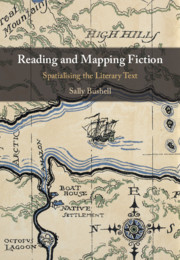Book contents
- Reading and Mapping Fiction
- Reading and Mapping Fiction
- Copyright page
- Dedication
- Contents
- Illustrations
- Acknowledgement of Prior Publications
- Acknowledgements
- Introduction
- 1 A Shifting Relationship: From Literary Geography to Critical Literary Mapping
- 2 Historicising the Fictional Map
- 3 Doubleness and Silence in Adventure and Spy Fiction
- 4 Mapping Murder
- 5 Playspace: Spatialising Children’s Fiction
- 6 Mapping Worlds: Tolkien’s Cartographic Imagination
- 7 Fearing the Map: Representational Priorities and Referential Assumptions
- 8 Reading As Mapping, or, What Cannot Be Visualised
- Bibliography
- Index
5 - Playspace: Spatialising Children’s Fiction
Published online by Cambridge University Press: 11 June 2020
- Reading and Mapping Fiction
- Reading and Mapping Fiction
- Copyright page
- Dedication
- Contents
- Illustrations
- Acknowledgement of Prior Publications
- Acknowledgements
- Introduction
- 1 A Shifting Relationship: From Literary Geography to Critical Literary Mapping
- 2 Historicising the Fictional Map
- 3 Doubleness and Silence in Adventure and Spy Fiction
- 4 Mapping Murder
- 5 Playspace: Spatialising Children’s Fiction
- 6 Mapping Worlds: Tolkien’s Cartographic Imagination
- 7 Fearing the Map: Representational Priorities and Referential Assumptions
- 8 Reading As Mapping, or, What Cannot Be Visualised
- Bibliography
- Index
Summary
Chapter Five explores the spatial dimensions of Children’s Fiction, arguing that the explicit presence of the map in many canonical texts signals the importance of place and space for the genre and that a specific form of bounded space between adult and child (playspace) emerges. This space is essential for the literary representation of childhood to function positively. The spatial play that this enables is exemplified in Arthur Ransome’s Lake District Series whilst the – equally powerful – negation of playspace is embodied in Peter Pan. (84)
- Type
- Chapter
- Information
- Reading and Mapping FictionSpatialising the Literary Text, pp. 164 - 198Publisher: Cambridge University PressPrint publication year: 2020

